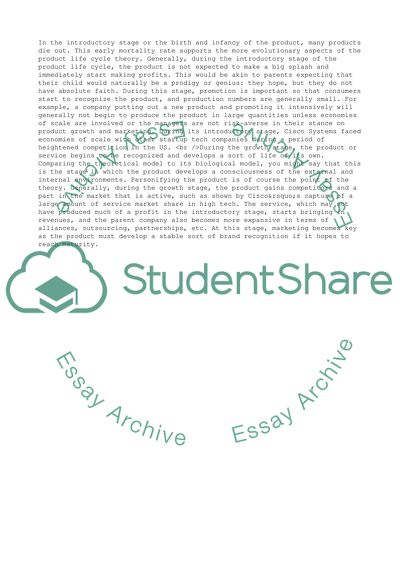Cite this document
(The Product Life Cycle Essay Example | Topics and Well Written Essays - 1500 words, n.d.)
The Product Life Cycle Essay Example | Topics and Well Written Essays - 1500 words. https://studentshare.org/business/1726392-how-useful-is-product-cycle-theory-in-explaining-the-development-and-diffusion-of-new-products-use-an-example-of-a-high-tech-product-to-illustrate-you-answer
The Product Life Cycle Essay Example | Topics and Well Written Essays - 1500 words. https://studentshare.org/business/1726392-how-useful-is-product-cycle-theory-in-explaining-the-development-and-diffusion-of-new-products-use-an-example-of-a-high-tech-product-to-illustrate-you-answer
(The Product Life Cycle Essay Example | Topics and Well Written Essays - 1500 Words)
The Product Life Cycle Essay Example | Topics and Well Written Essays - 1500 Words. https://studentshare.org/business/1726392-how-useful-is-product-cycle-theory-in-explaining-the-development-and-diffusion-of-new-products-use-an-example-of-a-high-tech-product-to-illustrate-you-answer.
The Product Life Cycle Essay Example | Topics and Well Written Essays - 1500 Words. https://studentshare.org/business/1726392-how-useful-is-product-cycle-theory-in-explaining-the-development-and-diffusion-of-new-products-use-an-example-of-a-high-tech-product-to-illustrate-you-answer.
“The Product Life Cycle Essay Example | Topics and Well Written Essays - 1500 Words”. https://studentshare.org/business/1726392-how-useful-is-product-cycle-theory-in-explaining-the-development-and-diffusion-of-new-products-use-an-example-of-a-high-tech-product-to-illustrate-you-answer.


